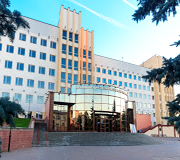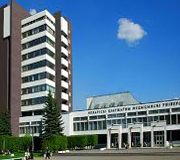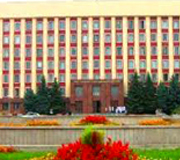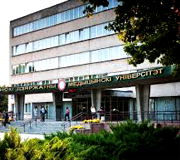Official Name
Republic of Belarus
President of Belarus
Aleksandr Lukashenko (1994 - present )
Prime Minister of Belarus
Sergei Rumas (2018 - present)
Total land area of Belarus
207,600 km²
Population – 9.491,8 million (on 1 January 2018)
-
a) Life expectancy at birth – 74.4 years
-
b) Population living in cities – 78%
-
c) The capital is Minsk – 1.982,4 million inhabitants
Regional centres of Belarus (on 1 January 2018):
-
1) Brest Oblast – 1.384,5 million inhabitants (Brest – 348 thousand)
-
2) Vitebsk Oblast – 1.180,2 million inhabitants (Vitebsk – 378 thousand)
-
3) Gomel Oblast – 1.415,8 million inhabitants (Gomel – 536 thousand)
-
4) Grodno Oblast – 1.043,7 million inhabitants (Grodno – 371 thousand)
-
5) Mogilev Oblast – 1.058,7 million inhabitants (Mogilev – 381 thousand)
-
6) Minsk Oblast – 1.426,5 million inhabitants
Ethnicity
|
Belarusian |
83.7% |
|
(Source : 2009 census) |
|
Languages spoken in Belarus
Belarusian and Russian
Independence Day of Belarus
July 3
Currency of Belarus
Belarusian rouble (Br) [USD 1.00=Br 2.14]
Economic indicators
GDP (2017) Br105.2 billion; per capita : Br11.1 thousand
Commodity structure of export (2017):
-
a) mineral products – 24.6%
-
b) chemical industry production, rubber – 18.4%
-
c) cars, equipment and vehicles – 18.1%
-
d) black, nonferrous metals and products from them – 7.0%
-
e) articles of food and agricultural raw materials – 16.6%
-
f) others – 15.3%
Commodity structure of import (2017):
-
1) mineral products – 29.0%
-
2) cars, equipment and vehicles – 23.1%
-
3) black, nonferrous metals and products from them – 10.0%
-
4) chemical industry production, rubber – 14.6%
-
5) articles of food and agricultural raw materials – 13.2%
-
6) others – 10.1%
Main Business Partners of Belarus (2017)
-
Russia
-
Ukraine
-
China
-
United Kingdom
-
Germany
-
Poland
-
Netherlands
-
Lithuania
-
Turkey
-
Italy
Main Industries of Belarus
-
metallurgical
-
mechanical engineering, including tractors and agricultural, cars, machine-tool constructing and tool industry, instrument making, radio engineering, electro technical, electronic, optics-mechanical industry; and metal working
-
chemical and petrochemical
-
light industry
-
food industry
Area of farmland in Belarus
8582 thousands hectares (on 1 January 2016)
Agriculture
Areas of specialty in agriculture: grain, potatoes, vegetables, sugar beet, flax, meat and dairy industry
Natural resources
-
wood
-
peat
-
potash and rock salts
-
small oil and natural gas fields
-
granite
-
dolomite
-
limestone
-
clay
-
sand
Number of people in employment
4.35 million (2017)
Breakdown of employed population by type of economic activity (2016):
-
a) production sector – 23.4%
-
b) agriculture, hunting, forestry industry – 9.6%
-
c) civil engineering – 6.7%
-
d) transportation and communication – 6.7%
-
e) retail; repairs of automobiles, household goods, and personal-use items – 14.5%
-
f) education – 10.3%
-
g) others – 28.8%
Unemployment in Belarus
33.7 thousand unemployed (2017)
Communications
Number of mobile communication subscribers – 11.4 million.
Penetration of LTE-powered mobile communication services – 60%. At present the services are available in Minsk and all the oblast capitals as well as major district capitals across the country.
Number of fixed telephony subscribers – 47.5 phones per 100 residents.
Number of Internet service subscribers and users – over 11 million, including over 3 million of fixed broadband Internet access subscribers. According to the International Telecommunication Union, in 2016 Belarus was ranked 23rd by the number of broadband subscribers.
International bandwidth – 1,110Gbps.
According to a research by the International Bureau of the Universal Postal Union, the Republic of Belarus is ranked 3rd among 87 countries in the development of digital postal services.
Transportation
Railways – 5480 km, including 1215 km of electric track
Highways – 102,000 km, including paved roads 88,200 km
Oil pipelines – 2,983 km
Gas pipelines – 7,837 km

 Ascend Global
Ascend Global


